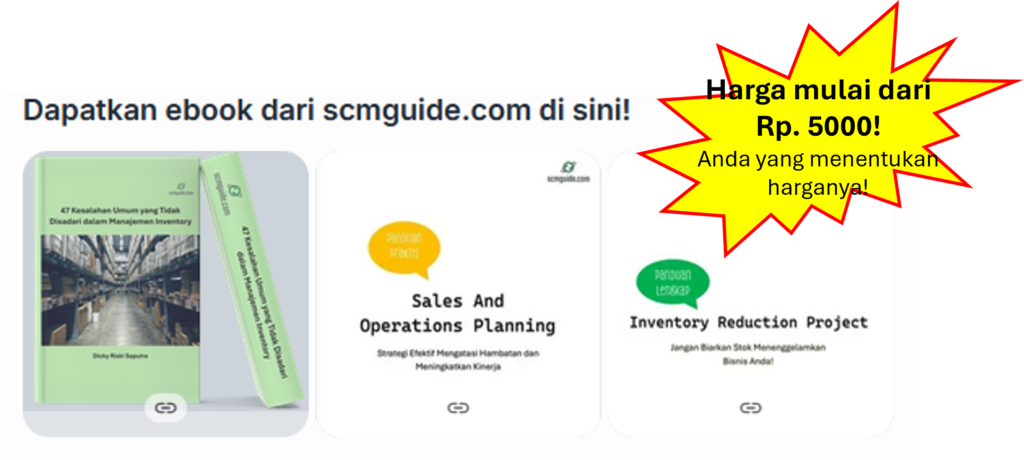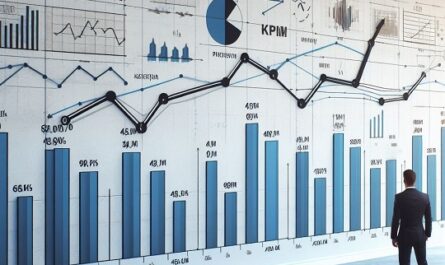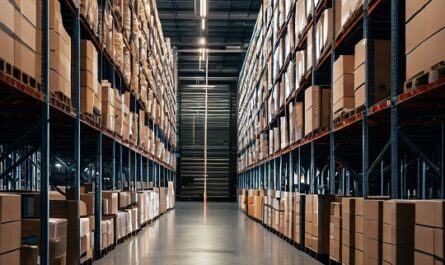In today’s fast-paced business landscape, a company’s ability to adapt and remain competitive often hinges on the efficiency and resilience of its supply chain. A supply chain upgrade is no longer a luxury; it is a necessity for businesses that want to thrive in a rapidly changing market. Whether you’re a manufacturer looking to optimize production, a retailer aiming to improve customer satisfaction, or a distributor seeking cost efficiency, a well-planned supply chain upgrade can be a game-changer.
This comprehensive guide will take you through everything you need to know about supply chain upgrades, including what they are, why they matter, when to implement them, and how to execute them effectively.
Before we go further into this topic, don’t forget to follow my LinkedIn account. You’ll get more helpful insights on supply chain management there.
Table of Contents
What is a Supply Chain Upgrade?
A supply chain upgrade involves implementing new strategies, technologies, and processes to improve the efficiency, resilience, and adaptability of your supply chain. It is a holistic approach to modernizing the way your business sources, produces, and delivers products or services.
Key Components of a Supply Chain Upgrade
- Technology Integration: Incorporating cutting-edge tools like artificial intelligence (AI), Internet of Things (IoT), and blockchain to enhance decision-making, improve transparency, and reduce errors.
- Process Optimization: Streamlining workflows, reducing redundancies, and eliminating bottlenecks to ensure smoother operations.
- Strategic Collaboration: Building stronger relationships with suppliers, partners, and stakeholders to foster trust and cooperation across the supply chain.
- Sustainability: Adopting practices that minimize environmental impact while maintaining ethical standards in sourcing and production.
A supply chain upgrade is not a one-size-fits-all solution. Each organization must tailor its approach to address specific challenges and opportunities unique to its industry and business model.
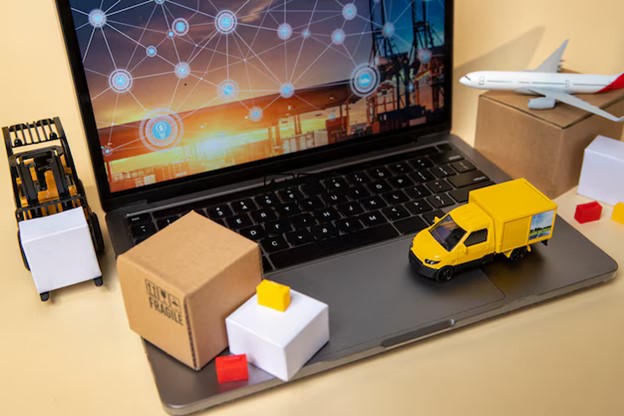
Why Upgrade Your Supply Chain?
Investing in a supply chain upgrade brings tangible benefits that go beyond cost savings. Let’s break down the key advantages in greater detail:
Increased Efficiency
Efficiency is the backbone of any successful supply chain. An upgrade allows you to:
- Automate Repetitive Tasks: Free up human resources by automating processes such as order processing, inventory tracking, and scheduling.
- Optimize Workflows: Reduce lead times by identifying and eliminating bottlenecks. For example, digitizing procurement processes can speed up supplier interactions and approvals.
- Enable Real-Time Monitoring: With IoT and advanced analytics, you can track shipments, inventory levels, and production cycles in real-time, enabling proactive decision-making.
Reduced Costs
Cost reduction isn’t just about spending less; it’s about using resources more effectively.
- Lower Inventory Holding Costs: By improving demand forecasting, you can maintain lean inventory levels without risking stockouts.
- Minimized Transportation Expenses: Route optimization tools can help reduce fuel costs and delivery times.
- Decreased Operational Overheads: Automated systems and streamlined processes reduce the need for manual intervention, cutting labor costs.
Improved Customer Satisfaction
Modern customers demand speed, reliability, and transparency. A supply chain upgrade can help you deliver:
- Faster Delivery Times: Enhanced logistics systems ensure timely fulfillment of orders.
- Higher Product Availability: Accurate demand planning ensures that you always have the right products in stock.
- Better Quality Control: Advanced tracking systems help identify quality issues early, ensuring only the best products reach your customers.
Enhanced Risk Management
Supply chain disruptions can result from factors like natural disasters, geopolitical tensions, or supplier failures. An upgraded supply chain enables you to:
- Identify Risks Early: AI-powered tools can detect patterns and predict potential disruptions.
- Build Resilience: Diversifying your supplier base and maintaining safety stock are just some strategies to mitigate risks.
Boosted Sustainability
Sustainability is becoming a key differentiator in the market. A modern supply chain can:
- Reduce Waste: Use advanced analytics to minimize overproduction and optimize packaging.
- Lower Carbon Footprint: Efficient route planning and energy-efficient facilities contribute to greener operations.
- Promote Ethical Sourcing: Ensure suppliers adhere to fair labor practices and environmental standards.
You might also like:
- Staying Strong in Supply Chain: How to Make Tough Decisions Without Outside Influence
- Blog Series: Complete Guide to Inventory Reduction Projects (Part 5 – Finished)
When is the Right Time to Upgrade?
Timing your supply chain upgrade is critical for maximizing its impact. Here are some scenarios that signal it’s time to act:
Declining Efficiency
If you notice that your operations are becoming slower, more error-prone, or costlier, it’s time to reassess. Common signs include frequent production delays, rising transportation costs, or increasing inventory write-offs.
End-of-Life (EOL) Technologies
Outdated systems pose security risks and can no longer meet modern business requirements. For instance, if your Enterprise Resource Planning (ERP) system lacks integration with newer tools, upgrading becomes essential.
New Technology Adoption
Technological advancements like AI, IoT, and blockchain are reshaping supply chains. If your competitors are leveraging these technologies and you’re not, you risk falling behind.
Market Disruptions
Events like the COVID-19 pandemic highlighted the importance of agile supply chains. If your business struggles to adapt to sudden changes, a supply chain upgrade can provide the flexibility needed to thrive in uncertain times.
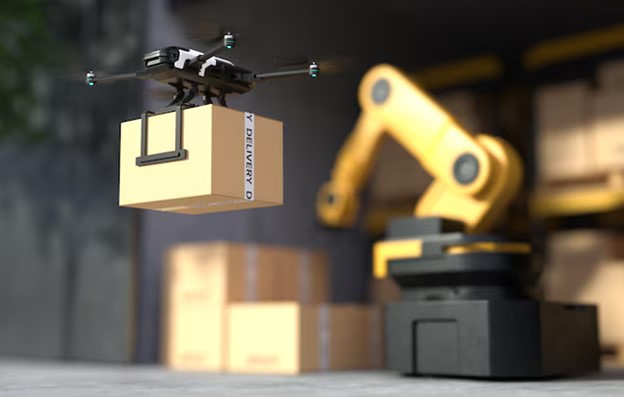
Steps to Upgrade Your Supply Chain
Upgrading your supply chain involves a series of strategic steps. Here’s a detailed roadmap:
Assess Your Current Supply Chain
Begin by understanding where you stand.
- Map Processes: Document every step of your supply chain, from procurement to delivery.
- Identify Pain Points: Are there delays, inefficiencies, or quality issues?
- Evaluate Technology: Assess the effectiveness of your current tools and systems.
- Analyze Supplier Performance: Identify which suppliers consistently meet your standards and which do not.
Define Your Upgrade Goals
Clarity is key to success. Ask yourself:
- What do we want to achieve? For example, do you aim to reduce lead times or improve order accuracy?
- How will we measure success? Use KPIs like order fulfillment rates, cost-per-order, or on-time delivery percentages.
Identify Key Areas for Improvement
Focus on the areas that will deliver the highest ROI.
- Inventory Management: Implement tools for real-time tracking and automated reordering.
- Procurement: Adopt e-procurement platforms to streamline supplier negotiations and contracts.
- Logistics: Optimize warehouse layouts and delivery routes for maximum efficiency.
Implement New Technologies and Strategies
Technology is the cornerstone of any supply chain upgrade. Consider:
- AI & Machine Learning: Use predictive analytics to forecast demand accurately and reduce wastage.
- IoT Devices: Deploy sensors to track shipments, monitor storage conditions, and prevent theft.
- Blockchain Technology: Ensure transparency and traceability, particularly in industries like food and pharmaceuticals.
- Automation: Use robotic process automation (RPA) for tasks like invoicing or order fulfillment.
Monitor and Continuously Improve
An upgrade is an ongoing process.
- Track KPIs: Use dashboards to monitor metrics like delivery accuracy, inventory turnover, and supplier performance.
- Analyze Feedback: Gather insights from employees, customers, and suppliers to identify areas for further improvement.
- Foster Innovation: Encourage a culture of continuous learning and adaptation.
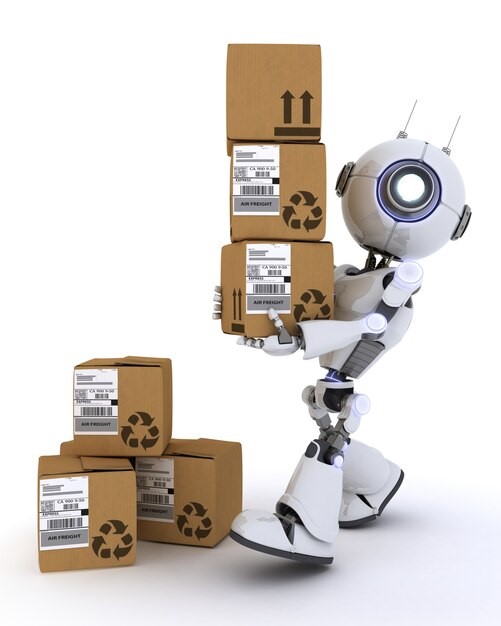
Key Challenges and How to Overcome Them
Every upgrade comes with its challenges. Here’s how to tackle them effectively:
Resistance to Change
Employees may fear job loss or struggle to adapt to new systems.
Solution: Communicate the benefits clearly and provide comprehensive training. Highlight how the upgrade will make their jobs easier, not redundant.
Budget Constraints
Limited resources can hinder ambitious plans.
Solution: Prioritize high-impact areas and seek phased implementation to spread costs over time.
Integration Issues
New technologies must work seamlessly with existing systems.
Solution: Partner with experienced vendors and test solutions thoroughly before deployment.
Data Overload
Managing the influx of data from upgraded systems can be overwhelming.
Solution: Invest in robust data analytics tools and ensure your team has the skills to interpret the data effectively.
Timing Your Supply Chain Upgrade
The timing of your upgrade can make or break its success. Consider the following:
- Avoid Peak Seasons: Implement upgrades during periods of lower demand to minimize disruptions.
- Align with Business Goals: Ensure your upgrade supports long-term strategic objectives.
- Stay Ahead of Trends: Monitor industry developments and adopt new technologies before they become mainstream.
You might also like:
- Smart Planning to Handle and Overcome Capacity Drops
- The Hidden Risks of System Automation in Supply Chain Management
Case Study: A Retailer’s Supply Chain Transformation
A mid-sized online retailer faced rising shipping costs and frequent stockouts, leading to customer dissatisfaction. By upgrading their supply chain with AI-driven demand forecasting and automated inventory management, they achieved:
- A 25% reduction in inventory holding costs.
- A 15% improvement in order fulfillment rates.
- A 20% boost in customer retention.
This case highlights how targeted upgrades can yield measurable results.
Future-Proofing Your Supply Chain
An upgraded supply chain isn’t just about solving today’s challenges; it’s about preparing for the future. Stay informed about trends like:
Autonomous Vehicles: These vehicles, including drones and self-driving trucks, are set to revolutionize last-mile delivery by reducing costs and speeding up delivery times. Some companies are already experimenting with autonomous delivery in urban areas, and early adopters may gain a competitive edge.
Sustainable Practices: Consumer preferences are shifting towards companies that prioritize sustainability. Businesses are exploring renewable energy in warehouses, biodegradable packaging, and carbon-neutral delivery methods. Upgrading your supply chain to incorporate sustainability not only benefits the environment but can also strengthen brand loyalty and attract new customers.
Supply Chain Digitization: The concept of a digital twin—a virtual representation of your supply chain—enables real-time simulation of scenarios and decision-making. Digitization provides unparalleled visibility into every stage of the supply chain, empowering businesses to proactively address challenges before they escalate.
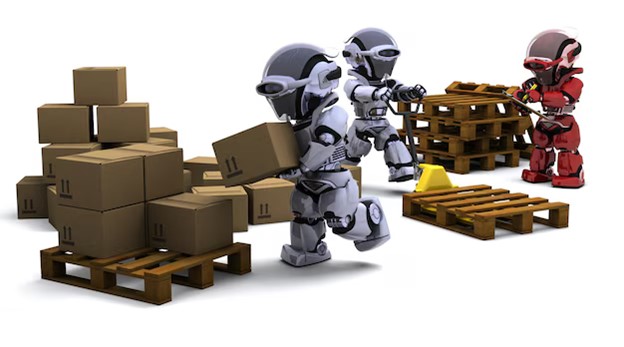
How to Sustain the Benefits of Your Supply Chain Upgrade
A successful upgrade isn’t a one-time effort; it requires ongoing maintenance and refinement. Here’s how to ensure the improvements you make today continue delivering results:
Regular Audits
Conduct periodic assessments of your supply chain processes, technologies, and performance metrics. These audits can help identify emerging bottlenecks or areas that need further optimization.
Invest in Employee Training
Supply chain upgrades often introduce advanced tools and technologies. Equip your workforce with the skills needed to leverage these innovations effectively. Training sessions, workshops, and certification programs can enhance your team’s proficiency.
Stay Updated on Industry Trends
Supply chain management is a dynamic field. Keeping an eye on the latest trends and innovations will help you stay ahead of the competition and adapt to changing market demands.
Collaborate with Stakeholders
Maintain open communication with suppliers, distributors, and other stakeholders. Their feedback can provide valuable insights into potential areas for improvement or adaptation.
Leverage Data Analytics
Data is the lifeblood of modern supply chains. Use advanced analytics to track KPIs, forecast demand, and gain actionable insights into your operations. Predictive analytics, in particular, can help you anticipate and prepare for potential disruptions.
The Human Element in Supply Chain Upgrades
While technology plays a central role in upgrading your supply chain, the human element is equally critical. Your team’s ability to adapt, innovate, and collaborate will determine the ultimate success of your efforts. Foster a culture that embraces change and encourages employees to contribute their ideas and expertise.
Building a Change-Ready Culture
- Communicate the Vision: Clearly articulate the reasons for the upgrade and the benefits it will bring to the organization and individual roles.
- Involve Employees Early: Engage your team in the planning and decision-making process to build buy-in and reduce resistance.
- Recognize and Reward Efforts: Acknowledge contributions and celebrate milestones to keep morale high during the transition.
You might also like:
- Port Congestion Crisis: How to Keep Your Supply Chain Moving Smoothly
- How to Present Data in Supply Chain: Don’t Add Complexity
Measuring the Success of Your Supply Chain Upgrade
Evaluating the impact of your supply chain upgrade is crucial for understanding its effectiveness and identifying areas for future improvement. Here are some key performance indicators (KPIs) to track.
Cost Metrics
- Reduction in inventory holding costs.
- Decrease in transportation expenses.
- Overall supply chain cost savings as a percentage of revenue.
Efficiency Metrics
- Improvement in order fulfillment rates.
- Reduction in lead times.
- Increase in warehouse productivity (e.g., orders processed per hour).
Customer Satisfaction Metrics
- On-time delivery rates.
- Customer retention and satisfaction scores.
- Decrease in return or complaint rates due to quality issues.
Risk Management Metrics
- Frequency of supply chain disruptions.
- Time taken to recover from disruptions.
- Number of suppliers meeting compliance standards.
Sustainability Metrics
- Reduction in carbon emissions.
- Percentage of suppliers adhering to ethical sourcing practices.
- Progress towards waste reduction goals.
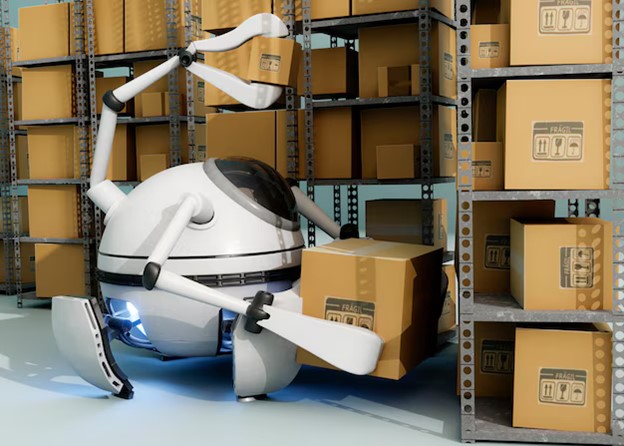
Overcoming Common Myths About Supply Chain Upgrades
Upgrading your supply chain can seem daunting, partly due to misconceptions that may discourage businesses from taking action. Let’s debunk some common myths:
Myth 1: Upgrades Are Only for Large Companies
Reality: Businesses of all sizes can benefit from supply chain upgrades. Many technologies, such as cloud-based inventory management tools, are scalable and affordable, making them accessible to small and medium enterprises (SMEs).
Myth 2: Upgrades Are Too Expensive
Reality: While some upgrades require significant upfront investment, the long-term savings often outweigh the initial costs. Additionally, phased implementation and prioritizing high-impact areas can make upgrades more financially manageable.
Myth 3: Technology Alone Solves All Problems
Reality: While technology is a critical enabler, successful upgrades also require process optimization, employee training, and strong leadership.
Myth 4: Disruptions During Upgrades Are Inevitable
Reality: With careful planning, thorough testing, and phased rollouts, disruptions can be minimized or avoided altogether.
Conclusion: Taking the First Step
Upgrading your supply chain is a strategic move that can transform your business, unlocking new levels of efficiency, customer satisfaction, and profitability. By understanding what a supply chain upgrade entails, recognizing when it’s needed, and following a structured approach, you can navigate the complexities of modernization with confidence.
Remember, the journey doesn’t end with implementation. Continuous monitoring, adaptation, and innovation are key to sustaining the benefits of your upgraded supply chain. Whether you’re integrating advanced technologies, optimizing processes, or enhancing supplier relationships, every improvement contributes to a stronger, more resilient supply chain.
The time to act is now. Evaluate your supply chain, set clear goals, and take the first steps toward a brighter, more competitive future for your business.
I hope you find it helpful!
Please share this article with your colleagues so they can also benefit. For more insights on supply chain management, follow my LinkedIn account. You’re free to use all articles on this blog for any purpose, even for commercial use, without needing to give credit.

 by
by 